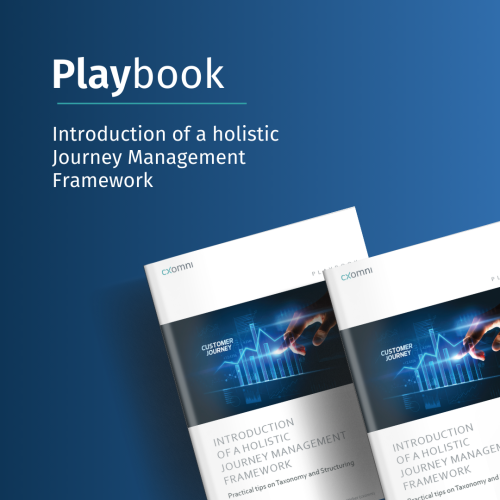3 pitfalls that prevent companies from true customer centricity
In this article, we take a closer look on modern business management. We want to identify critical pitfalls that prevent companies from achieving true customer centricity and find out what stops them from successfully shaping transformative change. We also want to find out what tactics companies can use to overcome these hurdles.
Normally, there are several factors that hinder a company from being more market oriented. One phenomenon is the so-called department silo, a structure of divisions with different areas of responsibility, key figures and market figures. In most cases, this corporate structure has contributed significantly to the company’s success. But market demands have changed and now it is positive customer experience that determines market share and business success.
Therefore digitization, data management, and innovation initiatives follow each another. For many team members this is exhausting, and the time to find the best approach for these complex correlations is scarce and unproductive.

Customer Journey Management can help to overcome these barriers.
With Customer Journey Management companies can switch into the customer’s perspective (outside-in perspective), identify business-critical moments, and find areas in the organization that need to collaborate for making a difference. By overcoming internal silos, companies can foster their internal cooperation and create a perfect setting for rolling out a “change experience initiative” within their organization.
But unfortunately, there are several pitfalls every decision maker should know. I will discuss three of them hoping you can use the insights for your own Change Management projects.
Pitfall #1: Decision makers need to have and report all data.
Customer behavior is complex. Decision makers assume that they need a complete data collection and documentation before they can start with Change Experience. Truly, there are data silos, which are mandatory (need-to-know data, privacy restrictions, etc.). However, companies are not focusing on urgent customer needs when working with too many data sources and different metrics.
Real-world interactions and qualitative insights often provide relevant information where changes are necessary. But many companies are driven by de facto standard metrics and therefore aspects which cannot be expressed in numbers are not considered in the later decision-making processes. In this case, customer journey visualization can be a pragmatic addition e.g. when comparing the actual and target journeys. But typical whiteboarding tools are too one-dimensional for this kind of journey mapping. Because when it comes to e.g. reporting results, they either overstrain management (“that’s not what we wanted to know”) or the team with duplicate data and content maintenance.
Specialized Journey Management tools meet these requirements. With their technical architecture, they ensure clearly defined responsibilities along the customer journey and orchestrate relevant insights across silos to the right stakeholders for implementation. With these tools, decision makers can continuously collect, analyze, and distribute data from different sources like customer feedback, social media interactions, or purchase history. The result is a closed-loop approach that enables companies to improve products and services or optimize processes for a better customer experience.
Pitfall #2: Journey Managers are Change Management enablers.
Fundamental change requires not only expertise and tools, but the support of senior management. It can be a tough challenge, if companies want to challenge existing management structures and establish a culture of collaboration and open dialogue. Therefore, it is important that employees can express their concerns and ideas and that management listens and responds to the needs and fears of their workforce. Change initiatives are then perceived as collaborative projects and not as top-down decisions.
For getting an overview, organizations can map all topics along the internal journey or the various customer journeys. Depending on the challenges, these can be employee, customer or user journeys. This approach provides a basis for prioritizing actions, so that Journey Management supports the strategic direction of the organization.
It is crucial that all issues and tasks are captured and processed in one transparent place. With this approach, journey mapping tools also have clear advantages over simple digital whiteboards.
Pitfall #3: Responsibilities remain the same.
Journey mapping helps to understand and visualize the perspectives of different stakeholders. It ensures that the actual experiences and expectations of users and employees become visible, which is valuable for change management. Mapping identifies pain points and needs that may be overlooked in a hierarchical process. This makes change processes not only efficient, but also people-centric and therefore sustainable.
We need an open approach to uncertainty and complexity. Change facilitators with journey mapping skills and tools can help clarify this in an interdisciplinary and cross-departmental way.
Conclusion: Best practices can inspire, but do not work as a box standard recipe.
Change experience is about identifying the areas within your company where there is the greatest need for optimization. Through a deeper understanding of root causes and a clear vision for Journey Management, companies can initiate transformative change that goes far beyond customer experience optimization and becomes a change experience.
Book a non-binding discovery call. Our experts will be happy to answer your questions and show you how your company can benefit from customer journeys.
About the author

Katja Busch is a freelance coach, consultant and trainer for digital product design and human-centered organizational development. She has been working for over 25 years in experience teams on both the service provider and corporate side, and as a lecturer at various universities. Katja is considered a reliable expedition leader in the digital world. With a trained eye she recognizes relevant patterns and finds the first step for a necessary business change with humanity.







